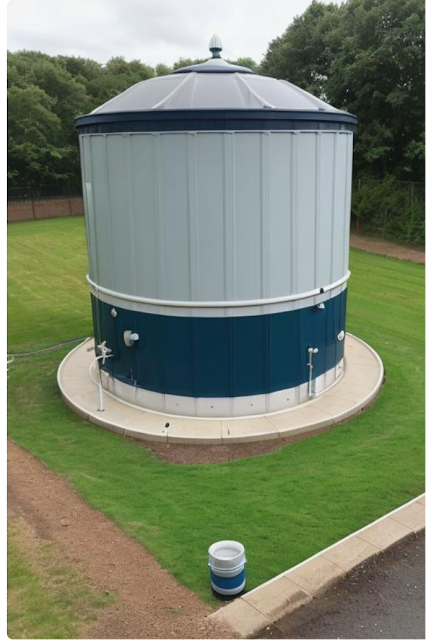Navigating the World of Potable Water Tank Paint in the UK: Ensuring Water Safety and Quality.
 |
| Navigating the World of Potable Water Tank Paint in the UK: Ensuring Water Safety and Quality |
Potable water tanks play a vital role in ensuring a clean and reliable water supply for both residential and commercial purposes. To maintain the integrity and safety of these tanks, the choice of potable water tank paint in the UK becomes paramount. In this comprehensive guide, we explore the importance of potable water tank paint, its key features, regulations, and considerations for selecting the right paint to ensure the quality and purity of stored water.
Understanding the Significance of Potable Water Tank Paint
Potable water tank paint serves as a protective barrier between the tank’s interior surface and the water it contains. It not only prevents corrosion and rust formation but also inhibits the leaching of harmful substances into the stored water. This is particularly crucial for tanks that hold water intended for human consumption, where maintaining water quality and safety is of utmost importance.
Key Features of Quality Potable Water Tank Paint
When selecting potable water tank paint in the UK, certain features are essential to ensure the paint’s effectiveness and adherence to safety standards:
1. Non-Toxic Formulation
Potable water tank paint should be specifically formulated to be non-toxic and safe for contact with drinking water. It should not contain any harmful chemicals or substances that could contaminate the water.
2. Chemical and UV Resistance
The paint should be resistant to the chemicals commonly found in water treatment processes while also offering UV protection. This ensures the paint’s durability and ability to withstand the harsh conditions of water storage.
3. Longevity and Durability
A quality potable water tank paint should have excellent adhesion and longevity, with the ability to withstand the constant exposure to water and potential abrasions.
4. Regulatory Compliance
The paint should meet the relevant regulations and standards for potable water applications, ensuring that it is safe and suitable for use in environments where water quality is a top priority.
Navigating Regulations for Potable Water Tank Paint in the UK
In the UK, potable water tank paint is subject to stringent regulations to ensure the safety and quality of drinking water. These regulations help prevent contamination and health hazards associated with inadequate paint choices. Key regulations include:
1. WRAS Approval
The Water Regulations Advisory Scheme (WRAS) in the UK evaluates and approves materials, such as potable water tank paint, that come into contact with drinking water. WRAS approval signifies that the paint meets the necessary standards for safety and water quality.
2. European Union Drinking Water Directive
The European Union Drinking Water Directive sets out requirements for the quality of drinking water. Any materials, including paint, that come into contact with water intended for human consumption must comply with the directive’s standards.
3. BS EN ISO 28706-2:2011
This British Standard specifies requirements for coatings used in tanks and vessels for potable water. It includes guidelines for testing the paint’s suitability and safety for contact with drinking water.
Considerations for Selecting Potable Water Tank Paint
Choosing the right potable water tank paint in the UK requires careful consideration of several factors:
1. Material Compatibility
Different tank materials (such as steel, concrete, or plastic) require compatible paint. Choose a paint that adheres well to the specific material of your tank.
2. Application Method
Consider the application method that suits your tank’s design and size. Brushes, rollers, and sprayers are common application methods for potable water tank paint.
3. Regulatory Compliance
Ensure that the chosen paint holds the necessary certifications and approvals, such as WRAS approval, to comply with UK regulations.
4. Durability and Longevity
Look for paint that offers long-lasting protection and requires minimal maintenance. This ensures the paint’s continued effectiveness over time.
5. Professional Application
To guarantee proper adhesion and uniform coverage, consider hiring professionals experienced in applying potable water tank paint.
Conclusion: Safeguarding Water Quality with the Right Paint Choice
In the UK, the safety and quality of potable water are paramount. The choice of potable water tank paint directly impacts the integrity of water storage systems and the purity of the water consumed. By selecting paint that meets regulatory standards, offers chemical resistance, and ensures long-term durability, you contribute to a reliable and safe water supply. Whether it’s for domestic use, commercial applications, or public utilities, investing in the right potable water tank paint is an investment in safeguarding water quality and maintaining the well-being of individuals and communities.

